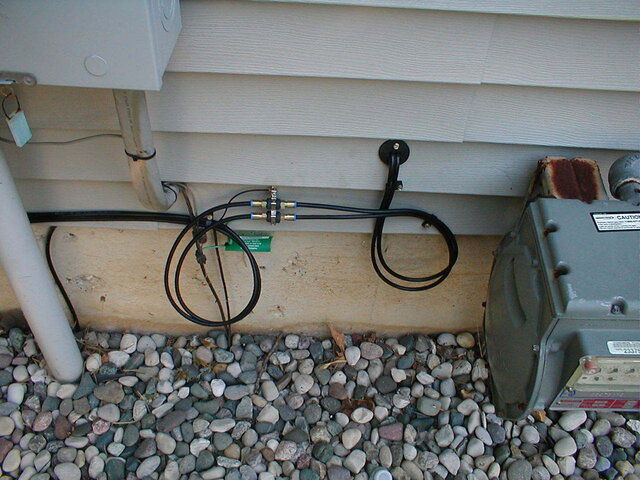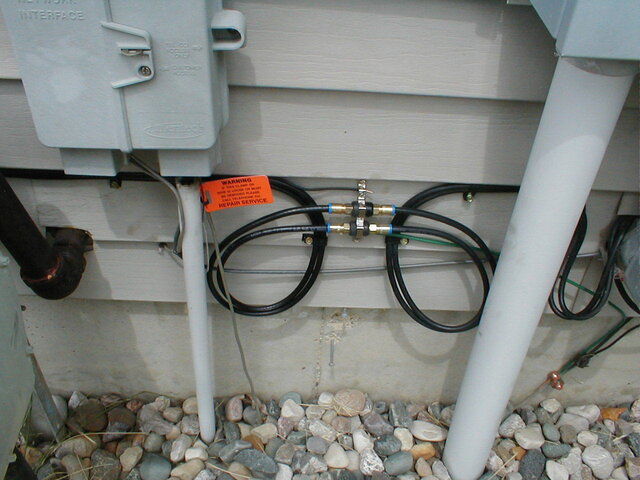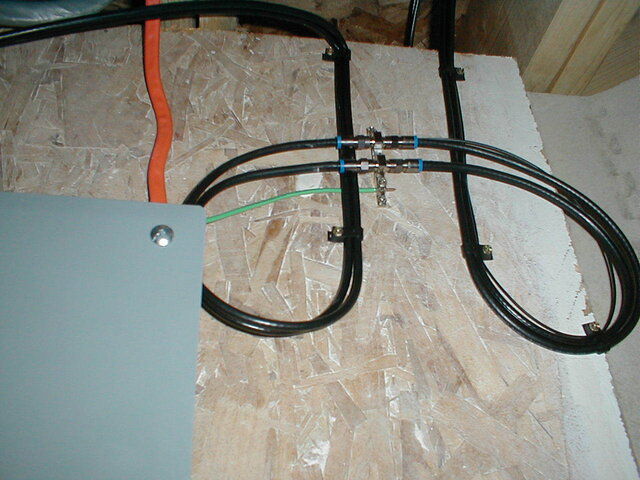Ok, I am admittedly probably overthinking this, but that's what I do. 
I am preparing house#2 to move into and then will sell house #1 (and THEN I'll move into house #2).
House #2 currently has no dish install, but I will want it when I move in. At this time it appears likely that we won't be moving in before December.
From an installer's perspective how hard is it to install in December in western NY?
This is almost certainly going to be an eave install on a ranch home (single story)
If I want the dishes on the END of the house at the gable end (eaves about 18") then I need to get up there and trim back a maple tree a little bit. OR I could move the dish location to about 12 feet from the gable end, still on the eaves (about 2 feet eaves here) and not have to trim anything. These locations satisfy my wife's "I don't want to see them from the street" request and provide good LOS to both the 110/119 and the 61.5 orbitals.
I hate that the last time they did an eaves install (on House #1) they ran the coax over the gutter. Black coax on white siding. Lovely.
Would it be worth it to me to put a couple of commdeck mounts up there and just say, "Put them there" when it comes time for an install? Or should I trim back the maple, go for the eaves install, and then just have the coax entering the gable end of the garage. I have my RG6 runs for the house already run into the garage for this.
I would love to NOT have them on the roof, but my wife doesn't want them as part of the landscaping when she looks out the window in the back yard.
Photos might help.... I'll see if I can find my wife's house pictures...
Ok... http://picasaweb.google.com/slms1989/GriffinStreet#5221812821240719442 is the front of the house for general orientation. If you stand on the driveway, facing the garage doors, you're facing east. You can see that the south side of the house has a line of pine trees. I am confident that I've got enough elevation to the 110/119 orbital to look over those trees without a problem.
http://picasaweb.google.com/slms1989/GriffinStreet#5214359586456534610 is the gable end of the garage. Tree cover in this photo looks much worse than it actually is. To put a dish on this eave almost to the back corner of the house, would require me to trim off one branch on the maple and it's not that big. Most of what you see as tree cover in this photo is actually behind the house and would not interfere with LOS.
http://picasaweb.google.com/slms1989/GriffinStreet#5214359109715164578 is the back wall of the house. The soffits here are not only vinyl clad, but also slanted so I don't think a soffit mount would work here. If you see that little light on the back of the house, there's a people-door into the garage there. If I mount 2 dishes above that door, I wouldn't have to trim any trees, but they'd probably run the coax over the gutter and that just looks ugly. Unless they carry white coax with them.
Or should I consider something like this
http://www.dishmountproducts.com/wm-200.html
and hope that no part of it is low enough for someone to whack their head on?
I am preparing house#2 to move into and then will sell house #1 (and THEN I'll move into house #2).
House #2 currently has no dish install, but I will want it when I move in. At this time it appears likely that we won't be moving in before December.
From an installer's perspective how hard is it to install in December in western NY?
This is almost certainly going to be an eave install on a ranch home (single story)
If I want the dishes on the END of the house at the gable end (eaves about 18") then I need to get up there and trim back a maple tree a little bit. OR I could move the dish location to about 12 feet from the gable end, still on the eaves (about 2 feet eaves here) and not have to trim anything. These locations satisfy my wife's "I don't want to see them from the street" request and provide good LOS to both the 110/119 and the 61.5 orbitals.
I hate that the last time they did an eaves install (on House #1) they ran the coax over the gutter. Black coax on white siding. Lovely.
Would it be worth it to me to put a couple of commdeck mounts up there and just say, "Put them there" when it comes time for an install? Or should I trim back the maple, go for the eaves install, and then just have the coax entering the gable end of the garage. I have my RG6 runs for the house already run into the garage for this.
I would love to NOT have them on the roof, but my wife doesn't want them as part of the landscaping when she looks out the window in the back yard.
Photos might help.... I'll see if I can find my wife's house pictures...
Ok... http://picasaweb.google.com/slms1989/GriffinStreet#5221812821240719442 is the front of the house for general orientation. If you stand on the driveway, facing the garage doors, you're facing east. You can see that the south side of the house has a line of pine trees. I am confident that I've got enough elevation to the 110/119 orbital to look over those trees without a problem.
http://picasaweb.google.com/slms1989/GriffinStreet#5214359586456534610 is the gable end of the garage. Tree cover in this photo looks much worse than it actually is. To put a dish on this eave almost to the back corner of the house, would require me to trim off one branch on the maple and it's not that big. Most of what you see as tree cover in this photo is actually behind the house and would not interfere with LOS.
http://picasaweb.google.com/slms1989/GriffinStreet#5214359109715164578 is the back wall of the house. The soffits here are not only vinyl clad, but also slanted so I don't think a soffit mount would work here. If you see that little light on the back of the house, there's a people-door into the garage there. If I mount 2 dishes above that door, I wouldn't have to trim any trees, but they'd probably run the coax over the gutter and that just looks ugly. Unless they carry white coax with them.
Or should I consider something like this
http://www.dishmountproducts.com/wm-200.html
and hope that no part of it is low enough for someone to whack their head on?
Last edited:




